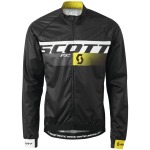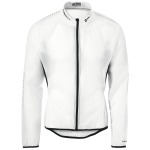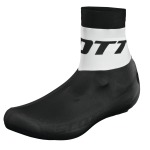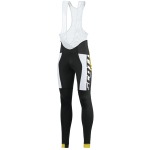It has been a while, intentionally so. Over the latter months of 2014 and the early months of 2015 you will hopefully have been using cycling to provide a break from a very structured running plan. Cycling in addition to running allows you to build endurance but more importantly you can add some intensity through well planned and structured faster sessions with reduced impact.
Our last article, no 7 called March On provided a series of sessions that could be incorporated within your training plan that would lead you into Spring as a stronger and healthier runner.
Spring is here and June will provide new challenges and new opportunities.
Lets have a recap. If you have followed March On, you will have incorporated 2 ‘faster’ cycling sessions into your week (typically Monday and Wednesday) and at the weekend you may have replaced a longer run with a MAF bike session. These cycling session should have been weaved into a carefully thought out run plan. Yes folks, you still need to keep running!
Although many of you may well have tipped your racing toes in an event, June does often signify a change. The racing calendar suddenly grows and a multitude of races are available week-in and week-out. This I hope comes as no surprise? If you have been clever about your training, you will have decided some time ago what races are important in 2015 and you will have structured your plan to make sure that you are in the best shape possible when they come around.
One thing is for sure, as target races loom, the need to be ‘specific’ becomes greater. However, the more focused we become, the greater the risk of injury becomes. It’s so easy to be ‘too’ focused. We all run (no pun intended) a knife-edge between being in supreme health and broken with injury. Be careful!
This is where cycling comes! We discussed in Article 3 (HERE) how cycling can be used to replace ‘recovery’ runs. Although a 20-40min run may well seem like a good idea, does running and adding additional impact really enhance recovery? For me, an opportunity to use non-weight bearing exercise like cycling really does provide a recovery option that allows you to ‘spin’ your legs, flush out tightness and toxins and all in a way that adds little or no stress to already sore and tight muscles. If in doubt, replace Monday and Wednesday runs with an easy 30-60 minutes of spinning (90+ cadence) and see if these sessions enhance your run legs. It’s worth noting as we have mentioned previously, cycling can tighten your hamstrings slightly due to the repeated action (in a shorter circle of motion), particularly when compared to running. So please make sure you allow 10-15 minutes after cycling for stretching.
Another factor to consider now is the endurance element that comes from cycling. Depending on your chosen distance to race (50k, 80k, 100k, 100 miles or maybe more?) you may well be daunted with the distance that you need to cover and more importantly, you may well be thinking, ‘how do I train for something that is going to take me 5, 10, 15 or 24 plus hours?’
If you are coming from a marathon running background, you will be used to the scenario of making your long run 3.5 hours or approximately 21/22 miles. If you try to apply this scenario proportionately to ultra running you are always going to be struggling. That is not to say that you shouldn’t have some big days of running/ hiking (time on feet) but the reality is that for most of us, we may well break!
Step in cycling!
Lets be clear. Cycling is not here to replace running. If you want to be a good runner (ultra runner) you need to run, you need to be specific and you need to practice. However, cycling can be incorporated to provide you with some great aerobic activity for multiple hours without the added and increased risk from continuous pounding of your own body weight through your knees, muscles and joints.
If in doubt take a look at what Francois d’Haene tweeted in 2014. This was after victory at UTMF, 2nd at the Skyrunning World Championships and a stunning UTMB victory.
Back-to-back runs are a popular training method for the aspiring and experienced runner. It’s a great way of breaking a long distance down; lets say you have a target race of 100k. You may set yourself a key target training weekend for 2 or 3 days. For example, a typical ‘long’ training weekend may look like 30k day 1, 30k day 2 and 40k day 3. It’s a great way to adapt the body, the mind and it provides a wonderful opportunity to practice nutrition, hydration and fine-tune your clothing. But you can’t do this every weekend… okay, yes you can BUT at some point it will all go pear shaped. Your body will say enough! What follows will be a period of inactivity, rest or maybe worse, injury.
Cycling sessions can incorporate an element of faster cycling. Maybe you’d like to work the hills a little? But be careful. You are using different muscle groups. Here are some stats from a 2 hour ride. This ride was all about keeping it nice and easy on an out-and-back ride.
We all know that consistency is key in any training plan. Training is not about one run, one session; it’s about all the combined sessions you have done that make up a whole. So think about incorporating cycling to replace some of your long runs.
You can still do a back-to-back session: 5 hours on the bike and the next day a 4-hour run. It’s a perfect combination. Think about it, 9 hours increasing your fitness and aerobic activity but only 4 hours of impact.
If you only have time to run long once a week then look at incorporating a 3 week on and 1 week off scenario. So for example, your long runs may look like this:
- Week 1 – 3 hours
- Week 2 – 3 hours 45 min
- Week 3 – 4 hours 30min
On week 4, forget a long run and add a 6-hour bike. You still get the aerobic benefits but once again, you rest those tired muscles and joints and use them in a different way.
There are no hard and fast rules here.
This post is about making you look at your training from a different perspective. To make you realise that just because you are an ultra runner, it doesn’t mean that you need to be an ultra runner everyday!
Summary
- Have a target planned in your diary so that you can be specific with your planning and work back from your key date.
- Don’t neglect run speed work and hill training.
- Use cycling in the week as ‘recovery’ from harder running sessions (speed and hills).
- Incorporate long bike rides in conjunction with your long run training. For example:
- Do one weekend in four that utilises long bike rides instead of long running.
- Mix and match – Long bike on Saturday with long run on Sunday.
- Back-to-Back Mix – Long run, long bike and a long run makes a great 3-day session.
- Don’t be worried about thinking out of the box. If you are feeling tired, sore or just need some inspiration – jump on the bike instead or running. It’s all exercise and as long as you are training, you are getting fitter. Just make sure you listen to your body and add rest as and when appropriate.
- Rest – it is a training discipline. Don’t think of it as weakness. Planned rest allows you and your body to adapt. It’s crucial.
- Use a HRM and GPS to monitor your training and efforts.
Enjoy the process. One thing that is great about sport is the ability to enjoy the outdoors. Cycling or running, take both hands, grab it and embrace it. Just think, you can cover considerably more ground on a bike.
Join us on STRAVA
Thanks to SCOTT SPORTS and SUUNTO for the support and backing
Check out SCOTT HERE
Check out SUUNTO HERE









![Suunto_logo [ConveWHITE_rted]](https://iancorless.org/wp-content/uploads/2014/10/suunto_logo.jpg?w=300&h=181)




















![Suunto_logo [ConveWHITE_rted]](https://iancorless.org/wp-content/uploads/2014/10/suunto_logo.jpg?w=150&h=90)










































